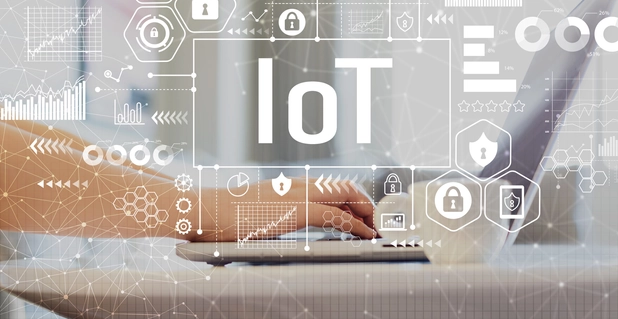What is IoT Device Management?
A transformative and modern technological advancement, IoT (Internet of Things) devices are non-traditional devices that transmit data in a similar...

We're sure you're familiar with IoT, the latest and greatest in the world of technology - but what is mobile IoT? Mobile IoT is more commonly referred to as cellular IoT. From here, you might be able to guess that this infers a form of connection between your mobile phone device and the Internet of Things - and you would be correct.
As you're already aware, both cellular devices and the Internet of Things are masters of connectivity. Cellular devices keep us connected to people and places: text, email, and social media mean that we can quickly and easily speak to anyone, anywhere, anytime. Similarly, IoT involves a whole network of high-tech 'smart' devices, communicating and gathering data via sensors: voice-controlled smart speakers, touchscreen smart fridges, and intelligent manufacturing machinery that makes production lines a whole lot easier.
It makes sense, therefore, that combining these two forms of technology would result in a higher level of connectivity that ever before. But what is mobile IoT and how does it work exactly?
In simple terms, cellular, or mobile, IoT involves connecting physical Internet of Things devices to the internet using the pre-existing mobile network that is used to power your smartphone. This is useful as there are already a whole host of cellular networks worldwide that have the capacity to handle huge amounts of data at one time using limited amounts of battery, making this a convenient and viable choice to propel IoT connectivity into the future.
There are two forms of technology used by IoT applications, and the one you use will generally depend on which infrastructure is commonly used in your area. LTE-M (Long Term Evolution for Machines) is most common in Western countries, such as America, Ireland and so forth. This allows your IoT devices to simply and easily use the cloud to communicate, and is great for situations where urgent, real-time transfer of data is essential.
Alternatively, NB-IoT (Narrowband IoT) transfers data on a smaller scale than LTE networks, only using a small amount of bandwidth and perfect for transmitting smaller amounts of data every now and again. This form of network is more common in certain areas of Europe and other developing areas.
.png?width=800&name=Untitled%20design%20(37).png)
Now that we've established what mobile IoT is, let's break it down a little further by establishing some of the similarities and differences between LTE-M and NB-IoT, and how they work in real-life IoT instances.
LTE-M is known for having a better capacity to handle IoT in motion, easily being able to create new connections between cell towers smoothly and without interruption. This is why LTE-M is a great solution for tracking valuable items in transit, such as shipping containers being sent overseas. The high capabilities of LTE-M allow for updates regarding the location of the item in real time.
In contrast, NB-IoT provides great extended coverage, and is perfect for a back-and-forth communication at regular intervals. The smaller bandwidth of NB-IoT means that this system is still highly reliable and great for handling less expansive and smaller-scale IoT operations. For example, in the hospitality sector, NB-IoT is great for keeping an eye on smoke, fire and toxic gas detectors, sending periodic updates to a backend system.
What is next in the world of mobile IoT? Much like any technology, this connectivity combination is expanding at rapid rates, with 5G posing as the newcomer on the block. With 5G cellular IoT posing the possibility for new, more powerful and more speedy modes of IoT connectivity, it's clear that the rates of expansion for the Internet of Things are limitless.
At Your Comms Group, we provide multi-network IoT SIM cards with various tariffs available to suit you and your IoT environment. We offer multi-card discounts, and you can find all of our information online. To find out more, get in touch with our friendly team today.

A transformative and modern technological advancement, IoT (Internet of Things) devices are non-traditional devices that transmit data in a similar...

Mobile device management software has taken logistics and transportation teams by storm. From real-time device tracking to automated compliance...

The Internet of Things (IoT) is revolutionising how we interact with the world around us. IoT enables devices to communicate and share data from...